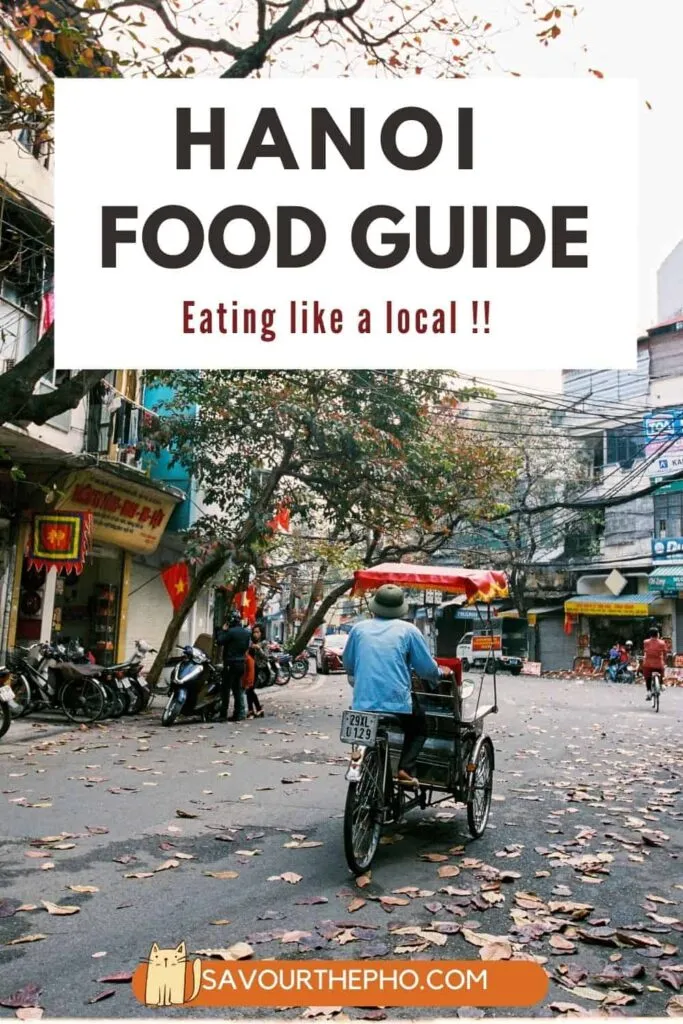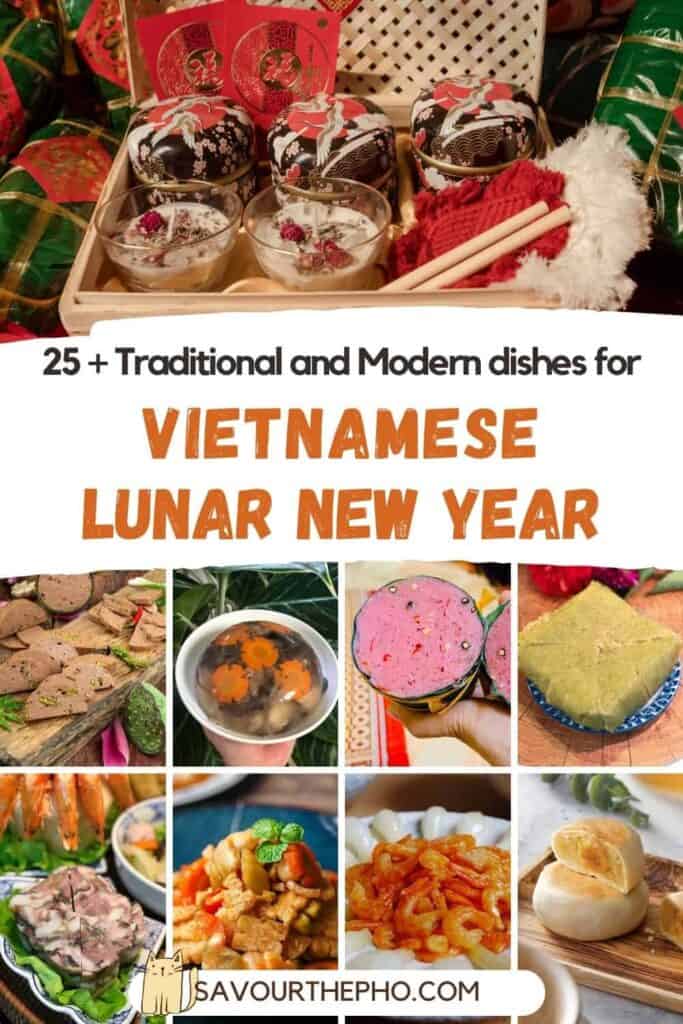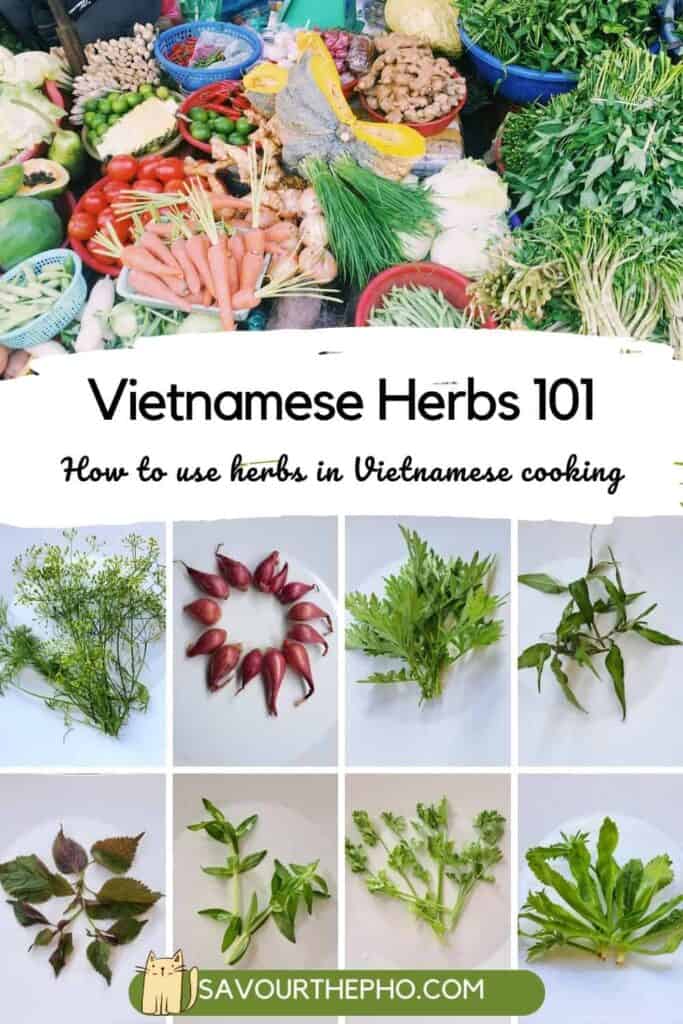Rice Papers (Bánh Tráng, Bánh Đa Nem) are a beloved ingredient in Vietnamese cuisine. Many of my German friends say wrapping spring/summer rolls is messy, but it shouldn’t be that difficult.

On my blog, I’ve already got you covered with two basic Vietnamese Spring Rolls:
- The fried: Nem Rán – Northern spring rolls.
- The fresh: Gỏi Cuốn – Also known as summer rolls, salad rolls, or rice paper rolls.
Today, I’ll talk about all things related to Vietnamese rice papers. Learn how to choose the right one for your rolls and wrap them up easily.
Rice Paper in Vietnamese Cooking
For me, it’s not Phở or Bánh Mì that best capture the spirit of Vietnamese food—it’s rice paper rolls. They’re simple, fresh, and bring everything into balance.
Every roll feels like a little package of goodness: soft rice paper, a handful of vermicelli for carbs, meat or tofu for protein, loads of herbs and veggies for freshness, and of course, that irresistible dip in Nước Chấm to tie it all together.
I’ve gathered a bunch of recipes with rice paper here—not just the classic rolls, but also playful twists like rice paper pizza, rice paper noodles, and even rice paper dumplings.
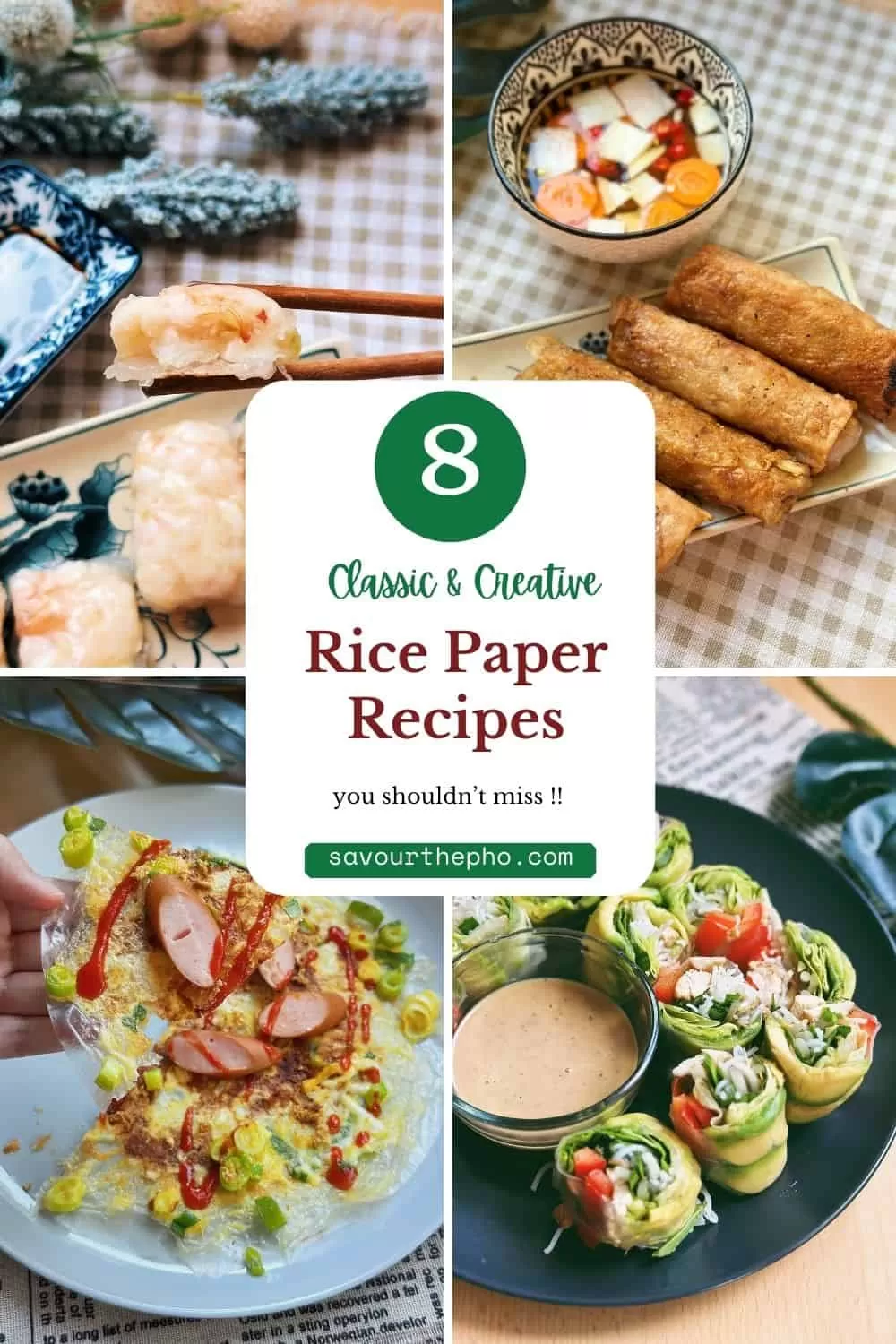
Choosing the Right Rice Paper
In Vietnam, rice paper isn’t just one thing—there are different kinds for different dishes. Some are made for fried spring rolls, some for fresh rolls, others for grilling into crispy crackers, and a few types don’t even need soaking.
For frying, the best rice papers are made with 100% rice flour. They fry up beautifully crisp and stay crunchy for a long time. For fresh rolls, you’ll usually see rice papers blended with a bit of tapioca starch. That touch of tapioca makes them more flexible and easier to roll without tearing.
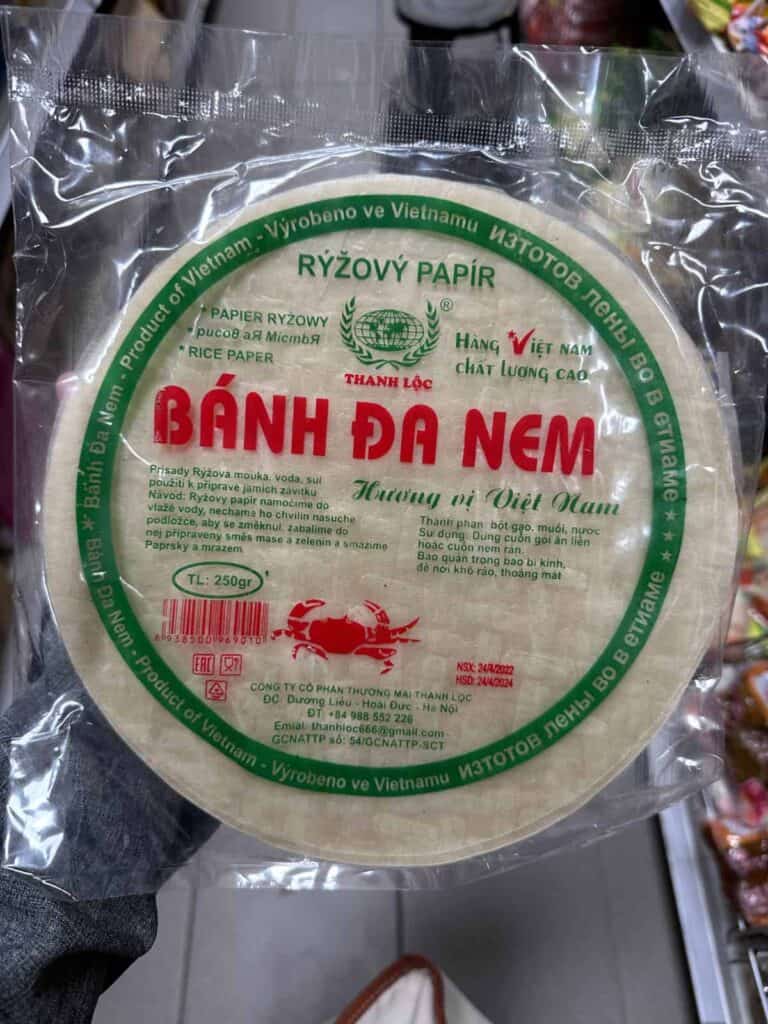
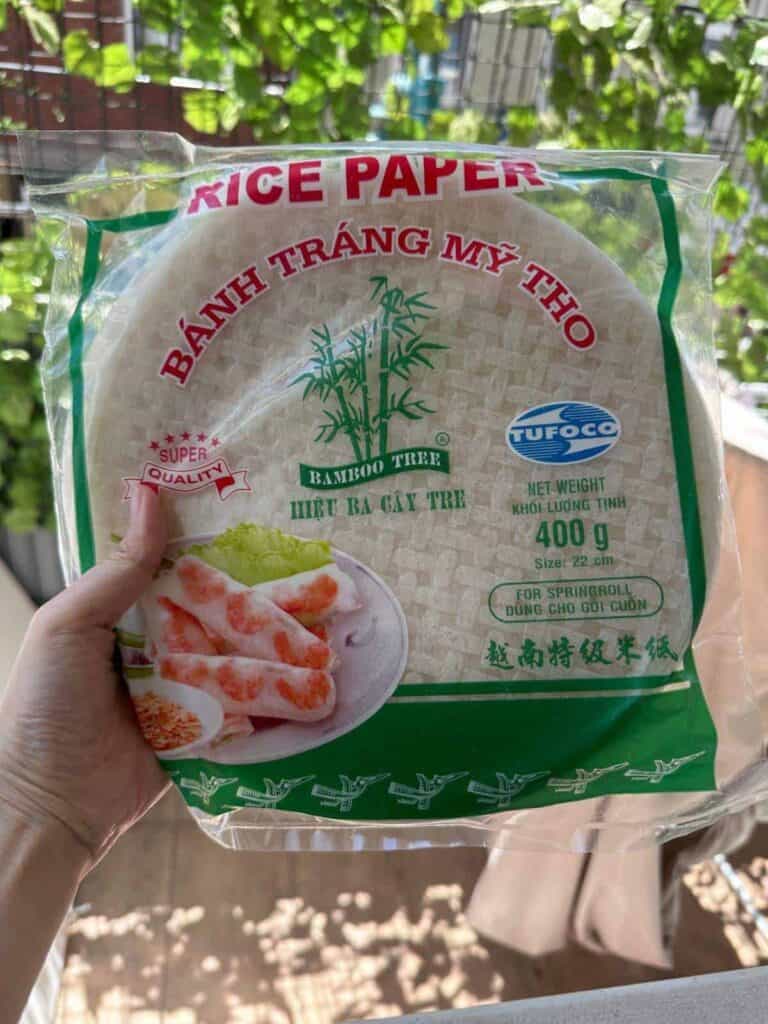
Outside of Vietnam, though, it’s rare to find rice papers made entirely of rice, since they don’t store as well. What you’ll often get are blends:
- Higher rice ratio → thicker, less see-through sheets (best for frying).
- More tapioca → thinner, more translucent sheets (best for fresh rolls).
What to avoid? Rice papers made only with tapioca starch. Without rice, they don’t have that signature flavor and are frustratingly fragile. These are often labeled as bánh tráng mỏng (thin rice papers) or bánh tráng dẻo (pliable rice papers). For me, without rice, they’re just not “real” rice papers.
Important Note
Don’t soak too long—and skip the warm water!
A quick dip (about 3 seconds) in room-temperature water is all you need. Slide or rotate the sheet in the water so it gets just lightly moistened. Then let it rest for a few seconds—the paper will continue to absorb water and turn soft, stretchy, and ready to roll.
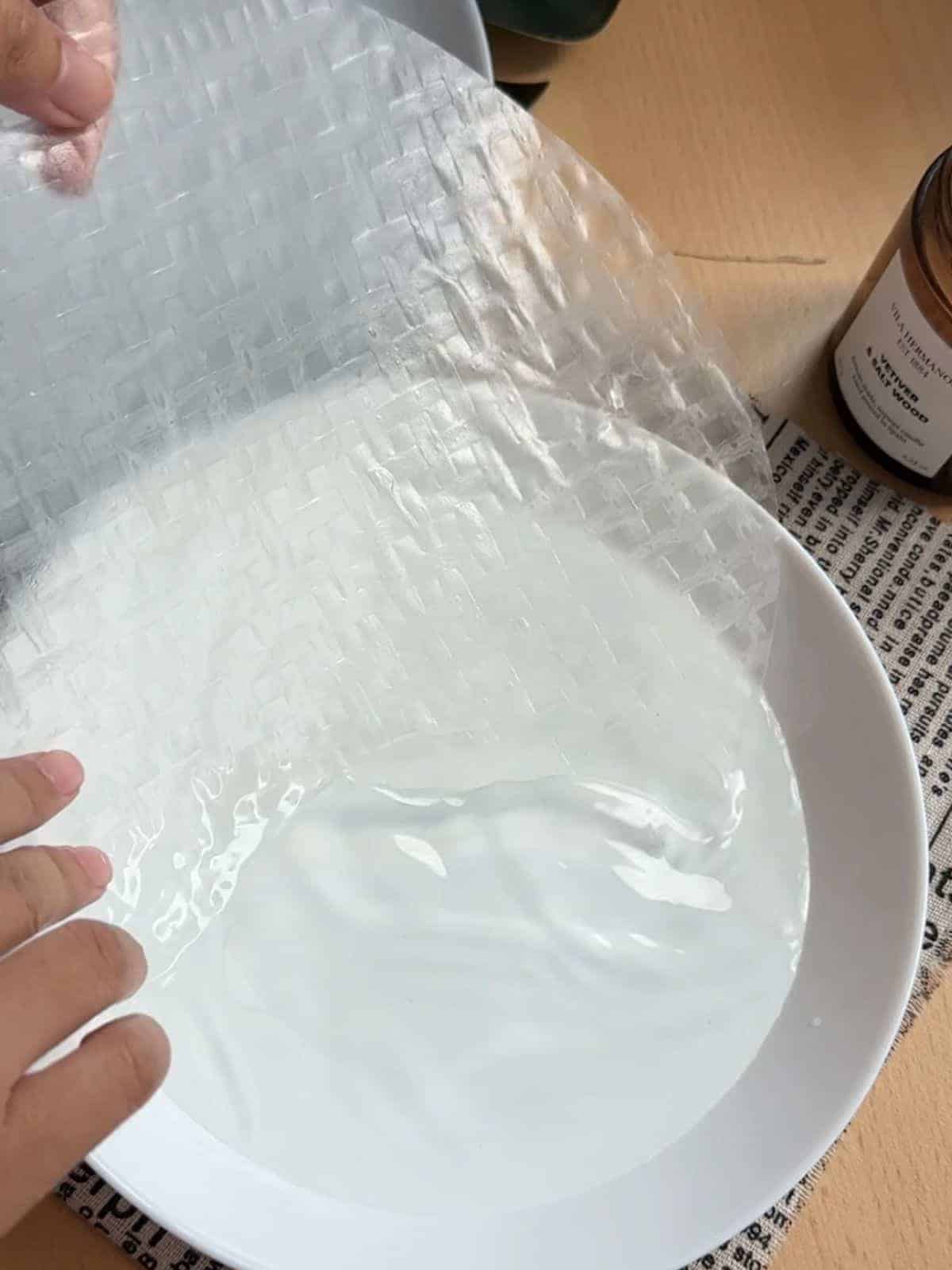
How to Wrap Fresh Spring Rolls (Summer Rolls / Rice Paper Rolls)
A few tips to make rolling easier:
- Use rice papers with a bit of tapioca—they’re more flexible and less likely to tear.
- Don’t overfill, especially if it’s your first time. Less is more!
- Roll tightly. Think sushi or a burrito: use your fingertips to tuck the filling in and press out any air pockets.
Step-by-Step:
- Lay a few lettuce leaves on the lower third of the rice paper, add a layer of vermicelli, your protein (like shrimp or sliced pork belly), and a handful of fresh herbs.
- Fold the sides of the rice paper toward the center, then fold the bottom edge over the filling.
- Roll everything up tightly so all the ingredients are snugly enclosed.
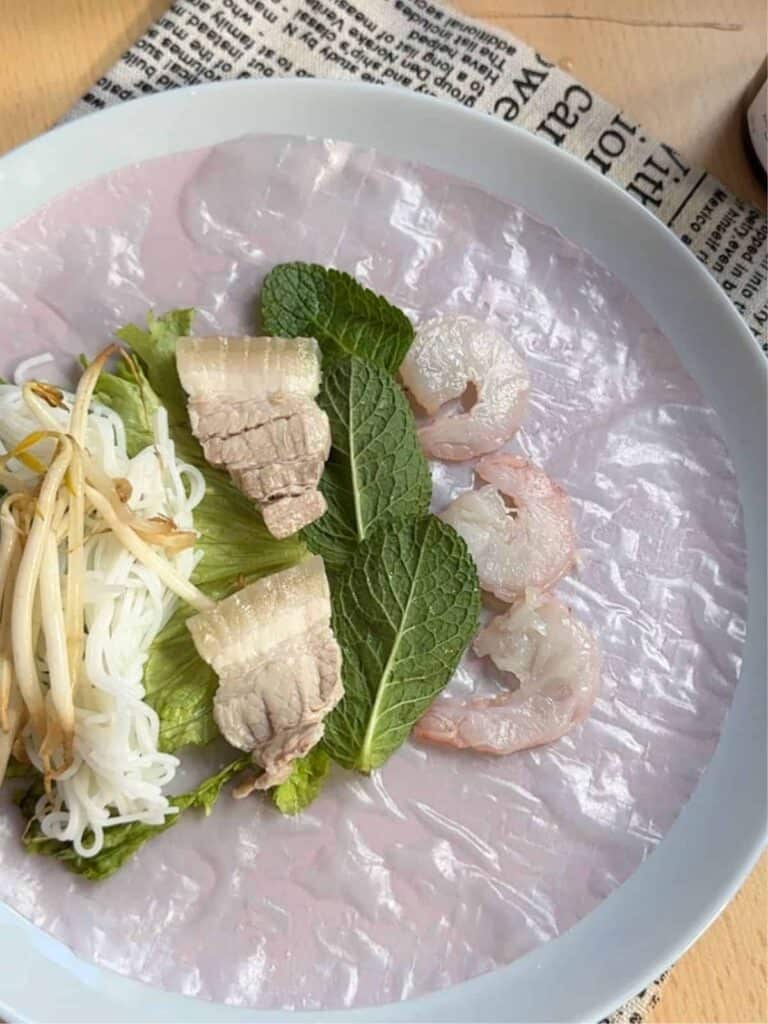



How to Wrap Fried Spring Rolls
Some tips to get perfect, crispy rolls:
- If possible, choose rice papers made entirely from rice—they give the best crunch.
- Brush a little liquid mixture onto the rice paper (3 tbsp rice flour + 3 tbsp water + 1 tbsp wine or beer + ¼ tsp salt). This boosts the rice content and helps your rolls fry up golden and crispy.
- Roll the paper around the filling. After the first rotation, fold the sides inward toward the center. This adds extra layers at the edges, making the rolls less likely to tear while frying.
- Don’t roll too tightly. The filling expands as it cooks, and tight rolls can burst.
Step-by-Step:
- Place the filling on the lower third of the rice paper.
- Roll once around the filling, then fold the sides inward.
- Continue rolling until the filling is fully enclosed. Seal the edge with a bit of egg white if needed.
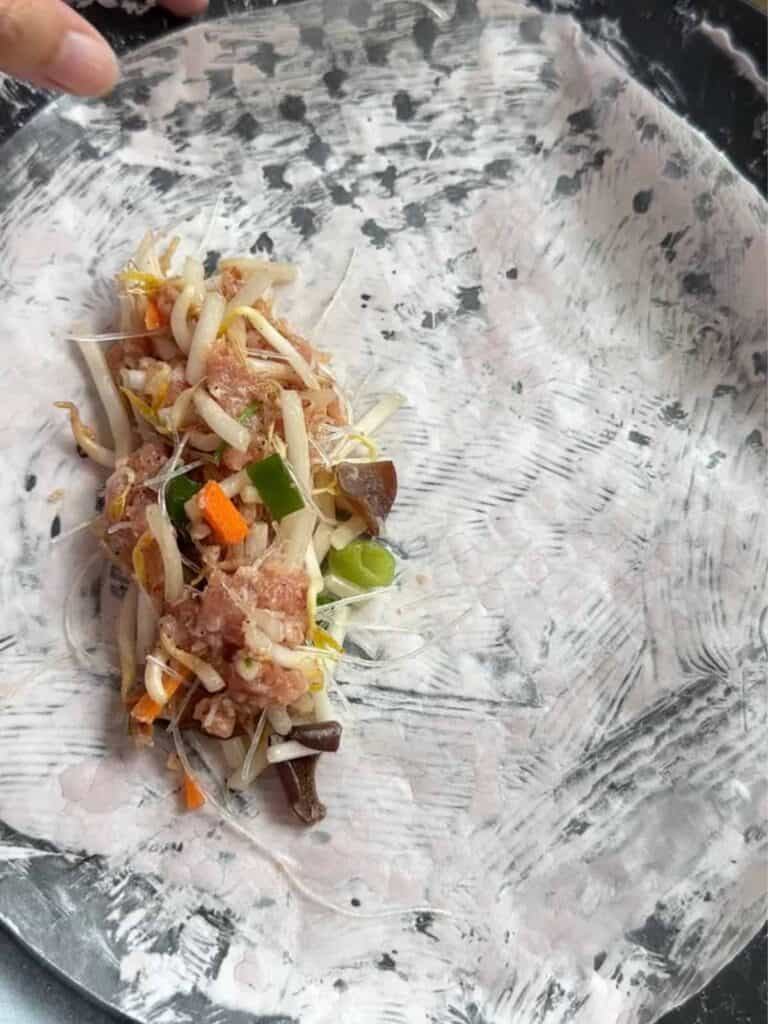

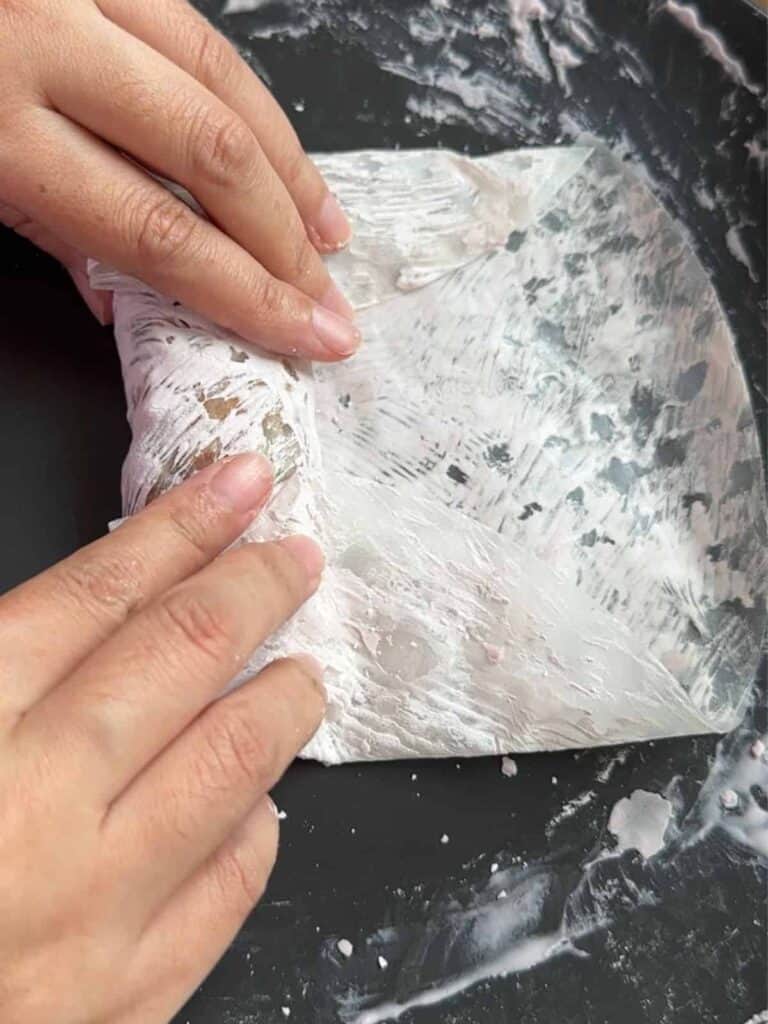
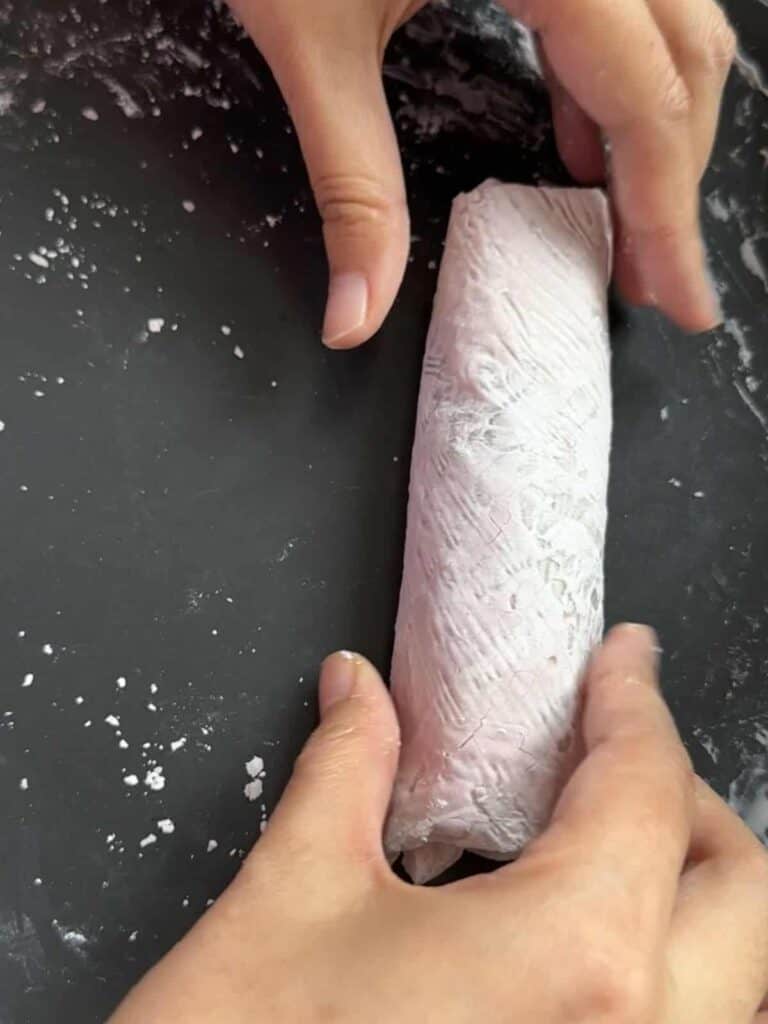
Extra Tips for Vietnamese Cooking and Traveling in Vietnam
